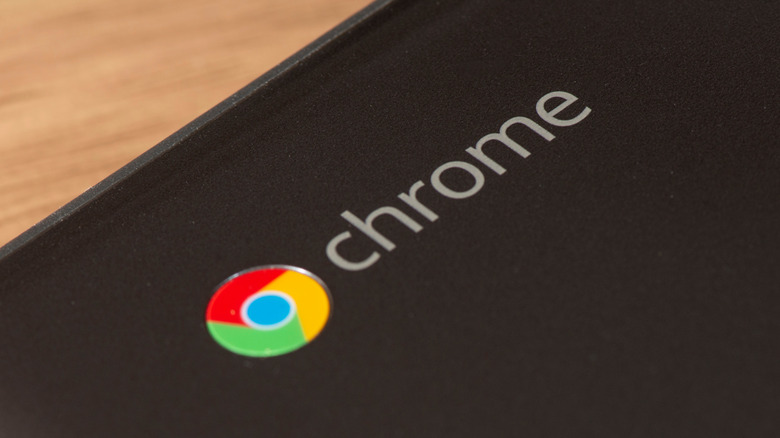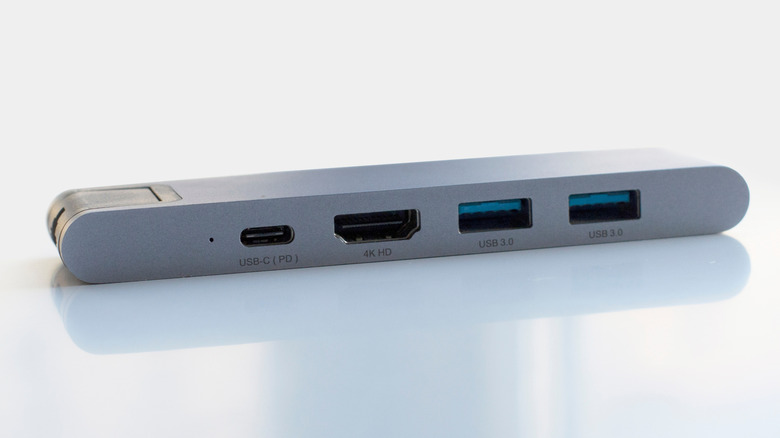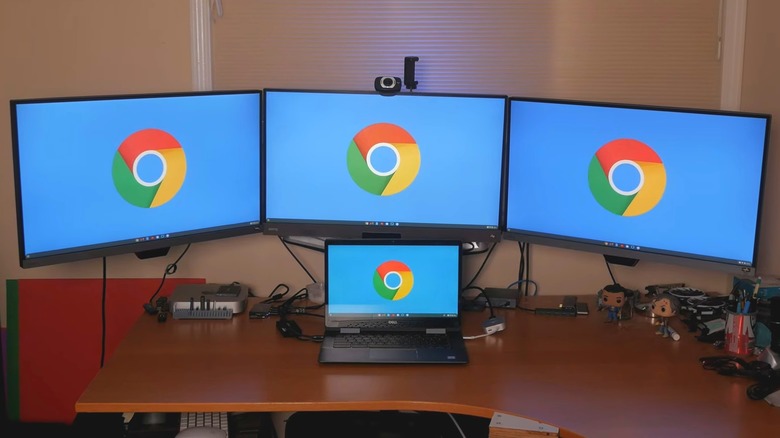Can You Use Two Or More External Monitors With A Chromebook? Here's What You Need To Know
We may receive a commission on purchases made from links.
For most use cases, the built-in screen of a Chromebook will serve you just fine. These are devices designed for personal use after all, so answering emails, writing papers, and other tasks intended for a single person are entirely doable without a larger monitor. You can even rotate the screen of your Chromebook, if necessary, for a specific task. With that said, just because it'll do more often than not doesn't mean you're confined to the standard Chromebook screen. It has the ability to connect and display on external monitors, or even multiple at the same time, if needed, as of a few years ago.
Of course, it should be stated that connecting a Chromebook to two or more monitors isn't as straightforward as one might hope. For some Chromebooks, it could be downright impossible. At the end of the day, it comes down to what a specific Chromebook's hardware can handle. Some models are able to handle projecting to more than one monitor at a time, while others can only do so with one monitor connected. Thus, if you want to attempt a multi-monitor setup with your Chromebook, before doing anything, it's best to do some research into your model. More specifically, you want to determine what the CPU is capable of in terms of supporting additional displays.
If you find that your Chromebook is one of the models that can handle more than one monitor, the next step is to set things up. Fortunately, this isn't too time or labor-intensive.
How to set up multiple monitors to a Chromebook
There are several ways to set up multiple monitors on your Chromebook. The first thing to do is take inventory of the outlets on your Chromebook, meaning how many HDMI, USB, and USB-C ports are present. From here, you can attach monitors accordingly with the proper cables. For example, if you have a Chromebook with two USB-C ports and an HDMI port, you can connect it to two monitors via two USB-C-to-HDMI cables, along with one HDMI-to-HDMI cable. Then, go into your Chromebook's settings, navigate to the Device tab, and then select the Display tab. Finally, choose the "Mirror Built-in Display" option, which will appear once the connection is successful.
Alternatively, you can always bring some additional hardware into the mix to accommodate specific cables. You can invest in a USB-C docking port, which allows for the connection of various different cable types without those ports needing to be built into your Chromebook. Some folks, such as u/briankass on Reddit, managed to get up to three monitors connected to their Chromebook using a docking station. Also, as recommended by fellow Redditor u/tidyhusband, a smaller but similar in operation DisplayLink USB-C adapter could also do the trick. Just make sure to familiarize yourself with the different types of USB-C adapters before you buy, so you know you're getting what you actually need.
All in all, so long as you have a Chromebook that supports it, connecting such a device to multiple monitors isn't difficult. Still, some issues may arise, even with a seemingly well-set-up system.
Troubleshooting multiple monitor Chromebook mirroring issues
Like any tech endeavor, mirroring a Chromebook screen to external monitors can prove troublesome. Fortunately, most fixes aren't too involved. First and foremost, you want to be absolutely certain that your Chromebook can even support multi-monitor setups. If it can't, unsurprisingly, such an arrangement won't work. If it can and the images aren't transferring properly, ensure the wires used are in good condition and are properly and firmly plugged into the Chromebook (or the dock) as well as the monitor. Don't forget to check that your monitor, or monitors, are set to the correct input source.
Going back to wiring, you should know that having the right USB-C port to plug into is crucial for screen mirroring. Only specific USB-C types are capable of sharing displays, while others are only equipped for charging and data transfer. You can determine if your USB-C port is suitable for this project by simply looking at the logos beside it, as these will indicate what it's capable of. On the other end of the connection, the monitors themselves could be the issue. Specifications such as the refresh rate and resolution need to be compatible with your Chromebook; otherwise, screen mirroring won't work as it should.
There are many ways to customize your Chromebook just for you, and while it's not possible to do so with all models, for many, putting together your dream multi-monitor setup can be done in mere moments. It may prove finicky along the way and require some research to get all the right elements together, but it's far from impossible.


